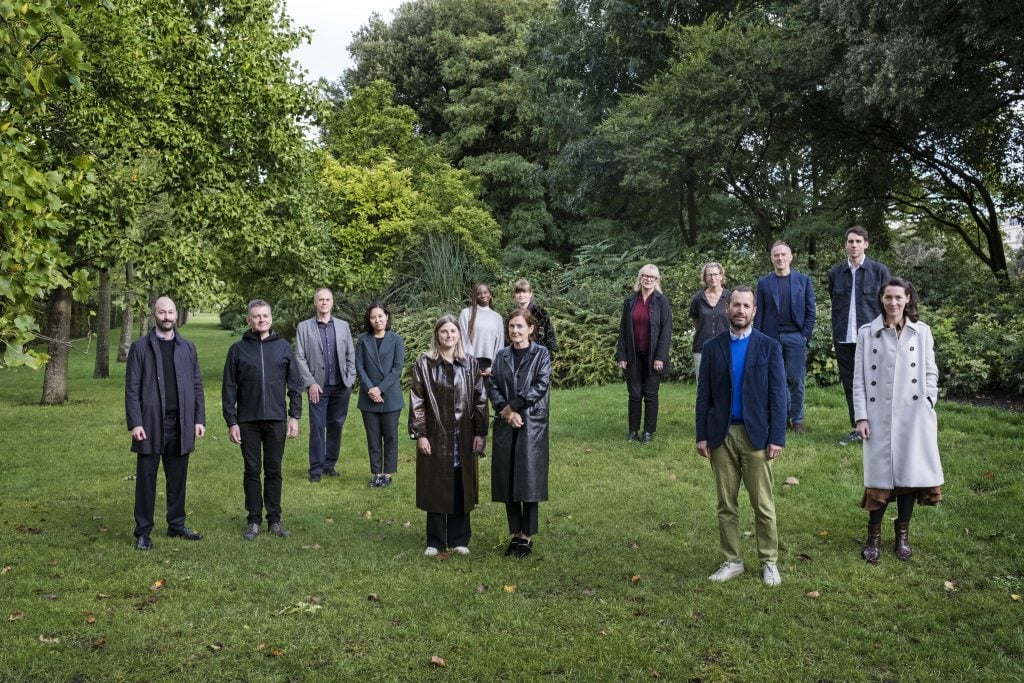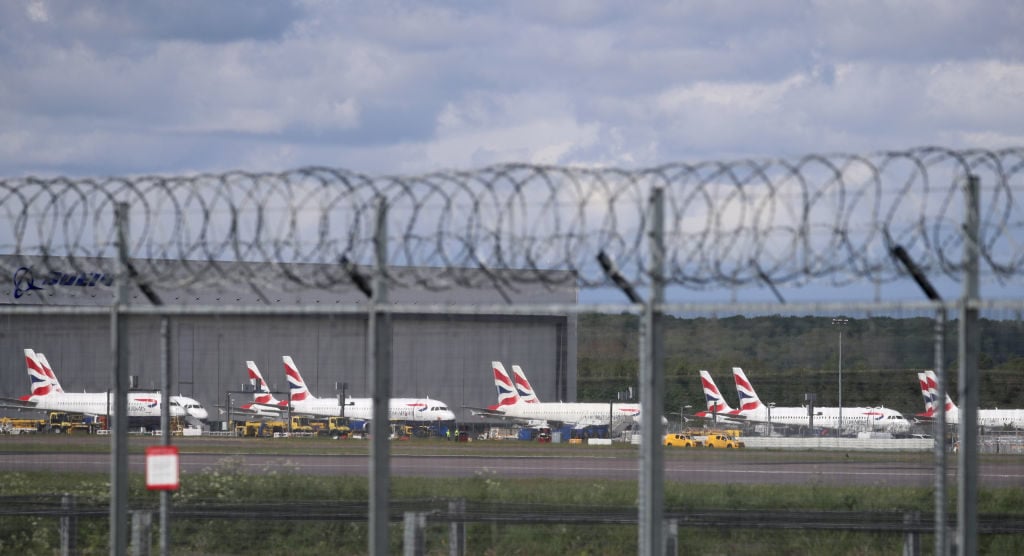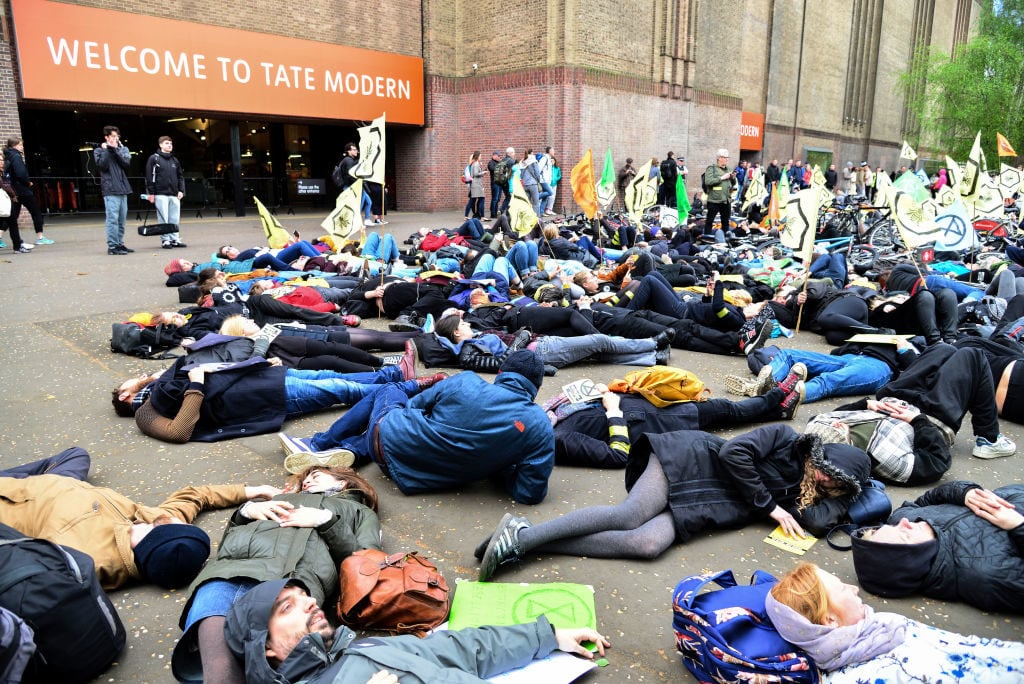Op-Ed
I’m a Ten-Percent Activist. Here’s How You Can Join Me to Push the Art Industry Toward Shared Sustainability Goals
Gallerist Thomas Dane petitions the commercial art world to come together to fight climate change.

Gallerist Thomas Dane petitions the commercial art world to come together to fight climate change.

Thomas Dane

In 2019, when the artist Gary Hume was having a show in New York, he asked his gallery, Matthew Marks, to ship his work from London by sea rather than fly it by air. He also asked the environmentalist Danny Chivers to write a report on the journey. Hume wanted to know what impact shipping his work would have on the journey’s carbon emissions.
It took 13 days for his work to arrive by boat to New York from London, 12 and a half days longer than the usual plane ride. Chivers’s report, published in partnership with logistics company Cadogan Tate, revealed that the carbon footprint created by moving the artworks by sea was 96 percent lower than if they’d been flown by plane, creating 24 metric tonnes of greenhouse gas savings.
Was it worth it? Significantly. It also saved a good deal of money. As a gallerist who moves a significant amount of art around the world in a normal year, I was intrigued.

British Airways planes parked at Gatwick Airport. Photo by Gareth Fuller/PA Images via Getty Images.
“I can’t claim to be an environmental activist,” Hume said when I rang him. “I’m more like ten percent activist. But I think there are lots of us who are ten percent activists, and if you put a lot of ten percents together it begins to add up.”
This resonated deeply, because I felt like I was also a ten percent activist, and for the first time I realized how unhelpful it was to ignore the potential of that ten percent. Then, in Danny Chivers’s book, The No-Nonsense Guide to Climate Change, I read his number one tip on what each of us can do to help with climate change.
“Build a movement,” Chivers writes. “We need as many people as possible to get involved, clued up and active. Think about what you can do to spread the word. Could you arrange a meeting or event at your workplace or in your community?”
A meeting or event? The art world specializes in these. Suddenly, doing something seemed eminently possible. I knew I wasn’t alone in this. The directors of Frieze, Matthew Slotover and Victoria Siddall, had long since commissioned a green report and were working hard to lower the art fair’s environmental impact, as was Kate MacGarry at her gallery, and others too. Greg Hilty, Sadie Coles, and Peter Chater were all keen to discuss what we might do if we worked together as a community and industry to lower our carbon emissions, and the idea of a climate coalition for the commercial art world was born.
Public institutions in the art world were already making strides in this area, many of them working with Julie’s Bicycle, a charity set up to help and advise the creative industries on taking action regarding climate change. Indeed, the main public body responsible for allocating funding for institutions in England, Arts Council, demands that our institutions meet specific standards when it comes to their environmental impact. But in the commercial art world, we don’t have any industry specific standards in this area. We should. By coming together we can set standards and pledge to help each other meet them.
In the event of it, the COVID-19 crisis meant we couldn’t gather as a large group at all in 2020—at least not in the same physical space. But we could come together online, and not just for a single day, but for a few hours every week. This regular pooling of time, energy and resources meant that we became a group proper, not just in spirit but in fact.
Now, the Gallery Climate Coalition, which formally set up shop online in the autumn of last year, is a nonprofit coalition of galleries and art workers, artists and individuals, primarily from the commercial sector, but absolutely not restricted to this. Anyone can join and we hope many will. (And so far over 200 London-based and some international galleries, artists, individuals, and organizations have.)
Our primary goal as a group is to understand what we are doing to the environment. How much carbon are our businesses putting into the atmosphere each year? We believe that by being specific and focusing on concrete realities, we can begin to wrestle with what often seems a huge, abstract, amorphous and unmanageable task.
In fact, there is nothing mysterious about carbon emissions. You find out where they are—we learned that a carbon calculator is the best tool for this and then, thanks to the art and technology firm Artlogic, built our own, adapted to suit any gallery (it can also be used by individuals)—and are thus equipped for the task of lowering them. The calculator is straightforward and easy to use, and free if you are a member of the GCC (which you can join with a voluntary donation). We believe your carbon audit should be done annually, as essential and habitual as filing your tax returns.
Mostly of course, air travel (passenger and freight), and energy use are the biggest culprits in terms of carbon emissions. That is why Gary Hume’s example of insisting that his work be shipped by sea is such a good one. What Hume and Matthew Marks did was not just create a one-off carbon saving, but kick start bigger action leading to more significant change. Of course, it’s less convenient to use sea rather than air freight, but only because it’s not yet the norm. As a group we can create new norms, set new standards, think collectively about different deadlines, petition insurance companies, ensure safety standards, and so on.

Activists from Extinction Rebellion stage a die in demonstration at Tate Modern. Photo by Claire Doherty/In Pictures via Getty Images Images.
This is just the beginning. The GCC’s members are a diverse group. Some of us are good at raising money, others at detailed research into better practice. Some of us will be ralliers, others work better behind the scenes. It doesn’t matter. The point is that together, we can do more. We can work both inwardly as an art community, sharing information, creating standards and holding each other to account; and, just as crucially, direct our energies outwardly, lobbying for wider change.
As individual art businesses, we are not primarily focused on environmental activism. It isn’t why we exist. But each of us lives and works in the environment. Each of us cares enough. Each of us can give—has to give—ten percent, at least, of our energy, time, and resources to environmental activism. Ten percent isn’t enough, of course, not on our own. But together, it can add up to real change.
Thomas Dane is a gallerist and a founding member of the Gallery Climate Coalition. If you are interested in hearing more about what the art industry can do to lower its carbon footprint, tune into an introduction to the GCC on Zoom on January 21 at 5 p.m. GMT (12 p.m. EST).